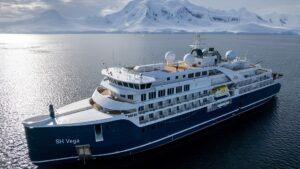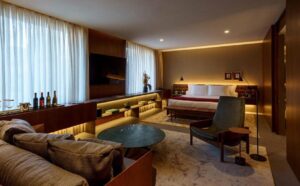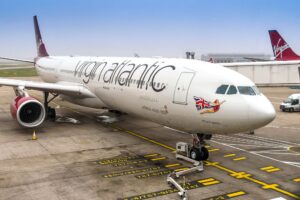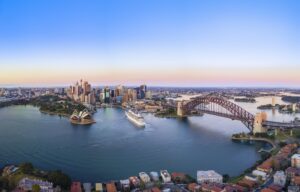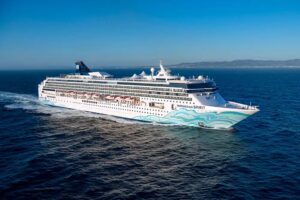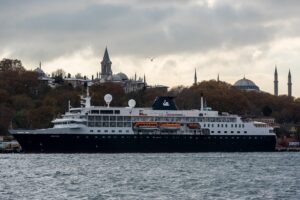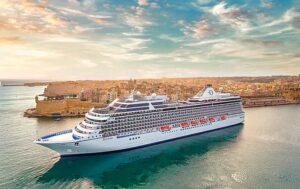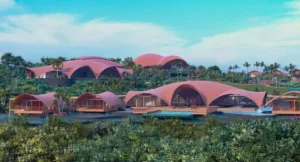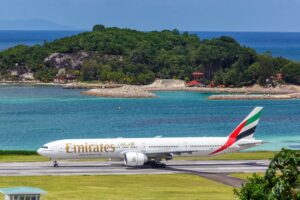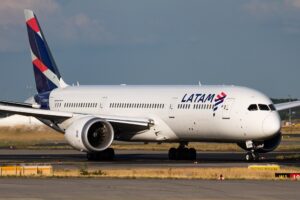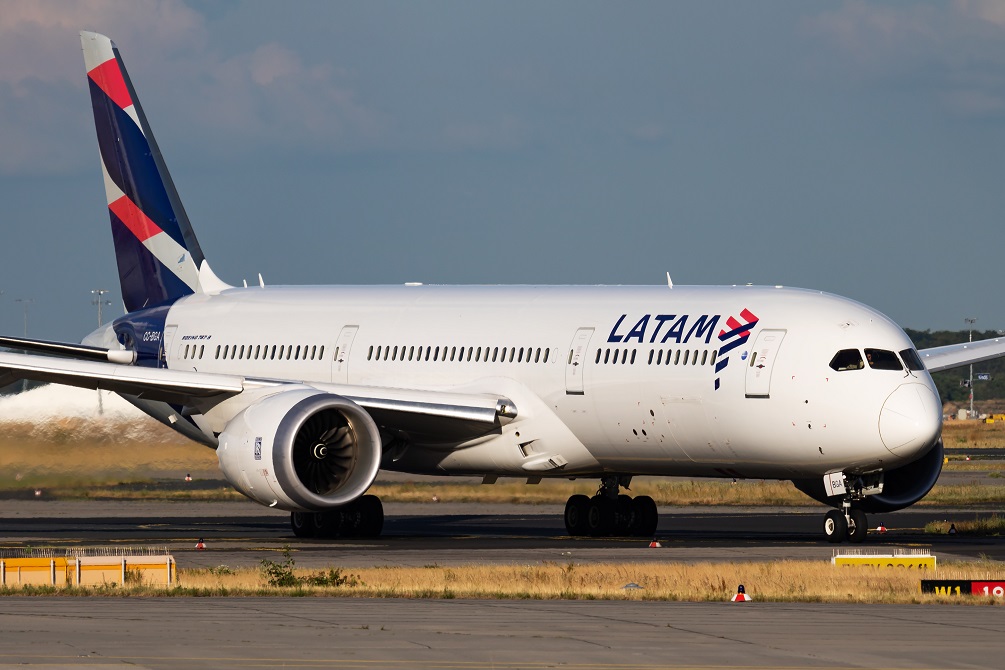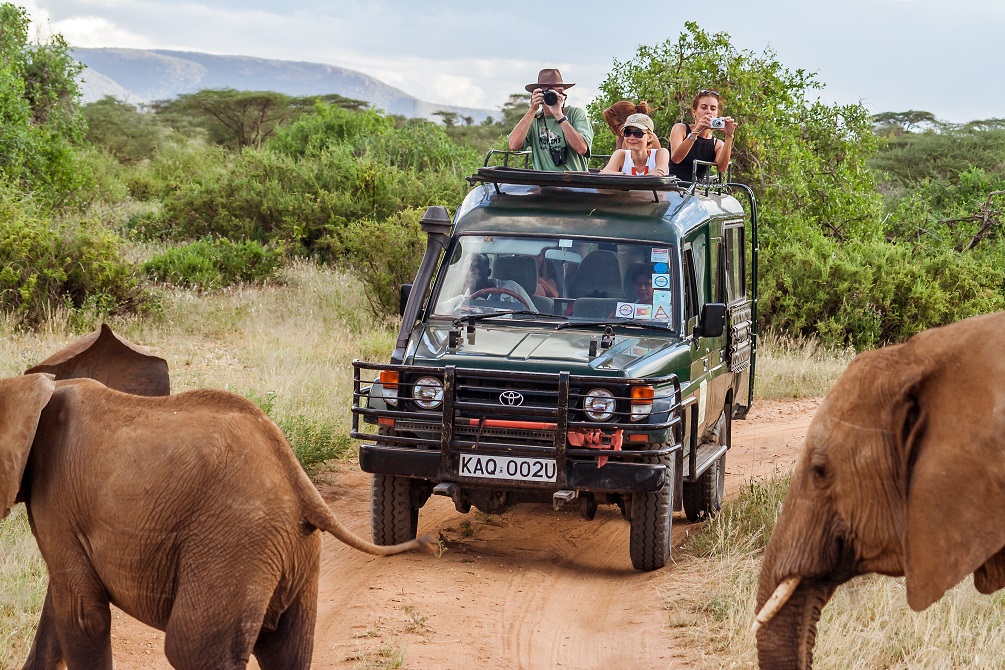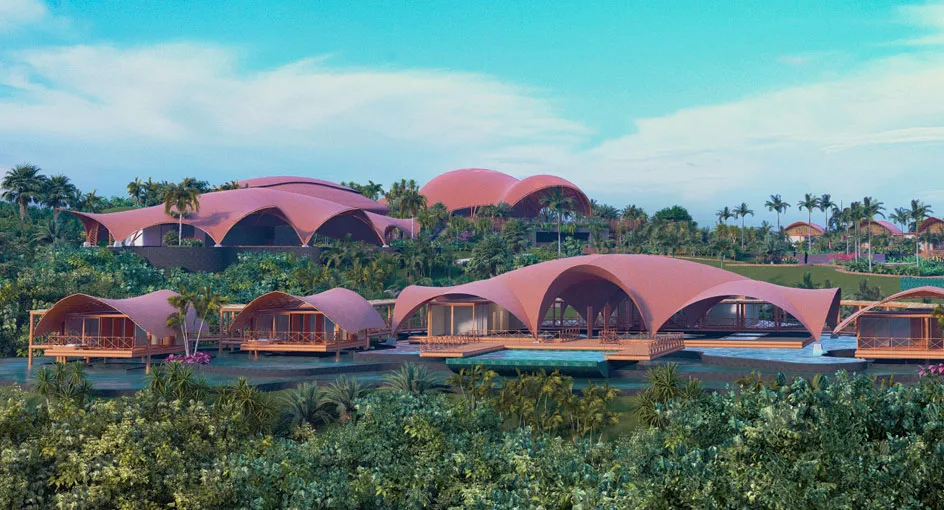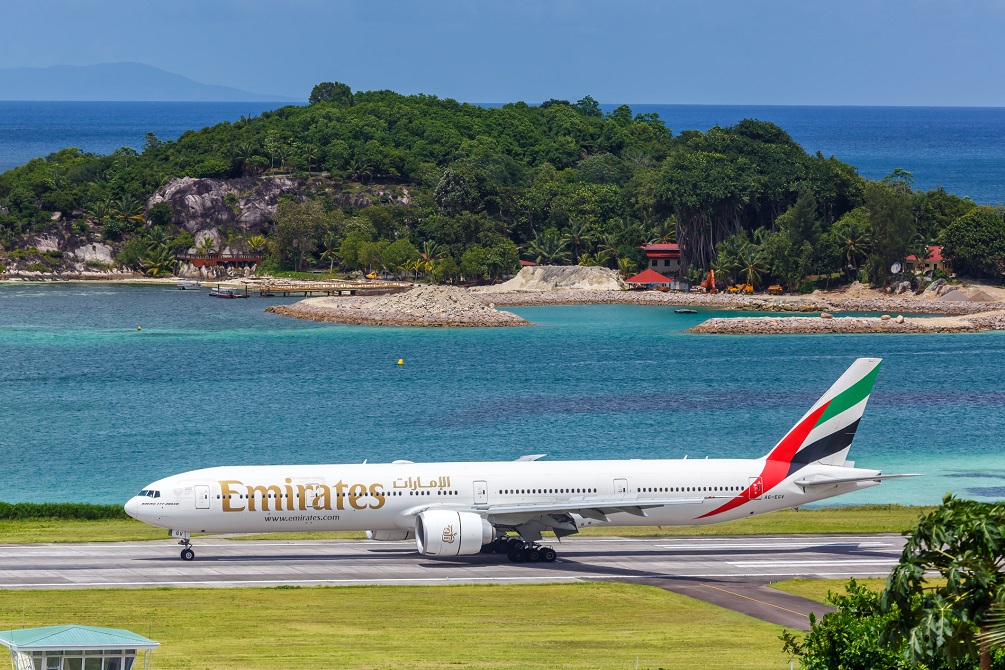Brazil
Ample leisure, balmy weather, and epic eco adventures are the lifeblood of the multicultural and geographically diverse Brazil.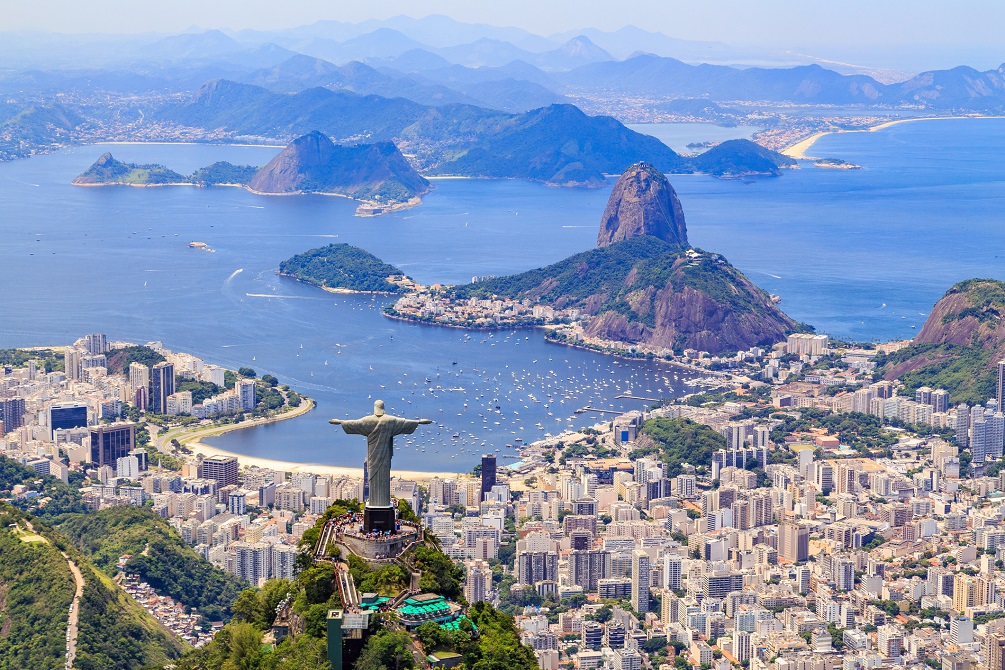
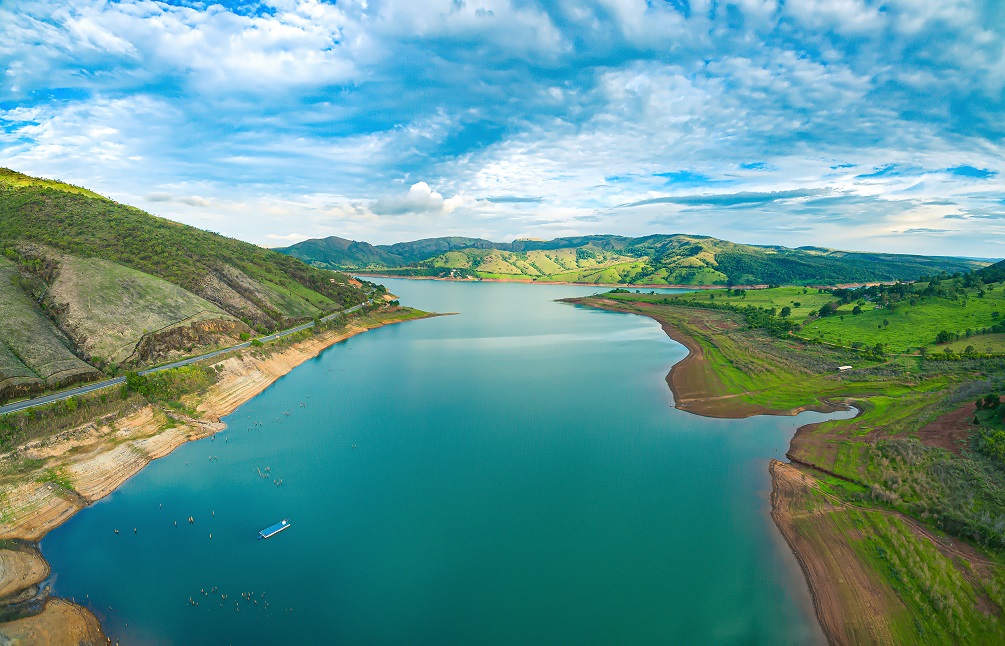


Brazil covers about 47 percent of the South American landmass. After the United States, Canada, Russia, and China, it’s the fifth largest country in the world.
The Atlantic Ocean extends along Brazil’s eastern coast, which features stunning golden beaches like the renowned Copacabana. Venezuela, Guyana, Suriname, and French Guiana stand along the northern border.
Colombia is in the northwest and Peru in the west. Uruguay shares the southern boundary and Argentina, Paraguay, and Bolivia, the southwestern border.
Brazil has a complex and contrasting topography. The landscape bears features of both equatorial and semitropical environments. These include plains, grasslands, marshlands, and low peaks and exclude deserts and high mountains.
There are four distinct geographical zones.
The Guiana Highlands in the north comprises glorious waterfalls, forested plateaus, mountain ranges, and white-water rivers.
Horseshoe lakes, wetlands, and undulating hills dominate the Amazon lowlands in the west. This area is a part of the Amazon basin, which covers over 58 percent of Brazil. The Amazon River basin contains the world’s largest river system and most vast tropical rainforest.
The Pantanal geographic region in the south contains swamps and marshland. It’s one of the world’s largest freshwater wetlands spanning Brazil, Paraguay, and Bolivia.
The Brazilian highlands cover most of the southern regions. They feature rolling hills, flatlands, steep cliffs, and valleys. São Paulo is one city in the highlands.
Golden and white sand beaches extend along the Atlantic lowlands. This area comprises lagoons, level floodplains, swamps, and sand dunes as well.
Brazil has numerous notable river systems flowing in the north, south, east, and northeast.
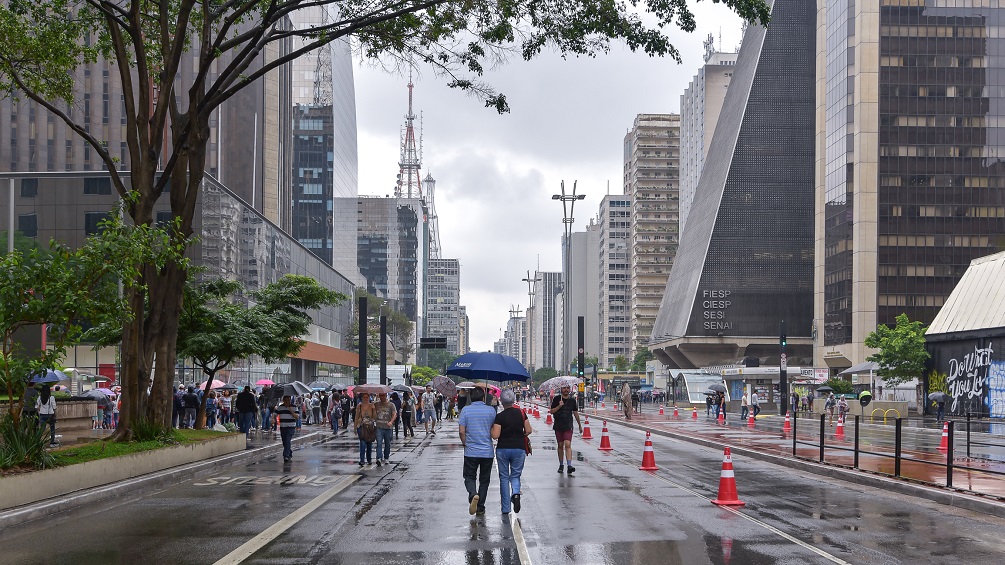


Most of Brazil has a damp and semitropical climate except in the northeast where it’s semiarid.
The annual average temperature in the north is 28°C (82°F) and in the south is 20°C (68°F).
Warm currents compliment the entire Brazilian coast, making it the perfect spot to sunbathe and bask in views of the blue waters of the Atlantic Ocean.
Brazilian winters (June to September) are dry and cold, with temperatures reaching 0°C (32°F) in some areas, featuring frost and snow. In summer (December to March), temperatures can reach 40°C (104°F) in certain locations like Rio de Janeiro.
The lowlands are cooler, with an average temperature of 26°C (79 °F). In the highlands towards the south, it’s a few degrees cooler.
Because the weather can change drastically in some places, it’s wise to pack warm clothes, regardless of the season.
Annual rainfall received in most of Brazil ranges from 40 to 70 inches (1,000 to 1,800 mm).
Areas of the Amazon basin and the Serra do Mar chain of mountains in Southeastern Brazil get the most precipitation. In the Brazilian highlands, rainfall is most during the rainy season in summer.
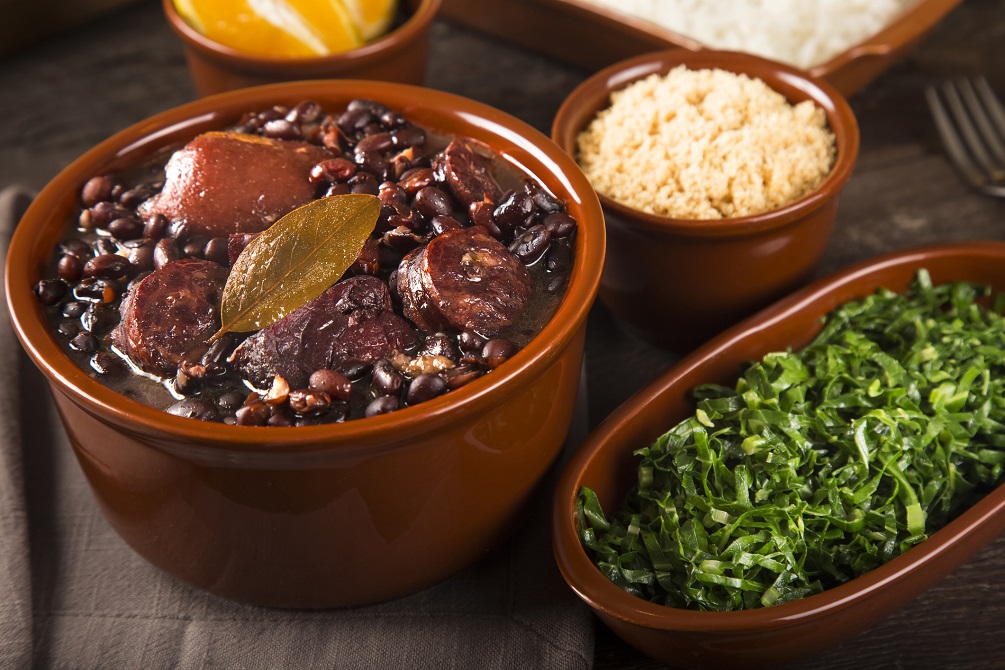


A combination of cooking styles and flavorings used by different cultures defines Brazilian cuisine.
Dishes preserve historical culinary traditions and regional differences. They also reflect the native and immigrant inhabitants coexisting in the country.
A popular and signature dish in Brazil is Feijoada, a stew made of beans, beef, and pork. Locals typically eat Feijoada for lunch on Wednesdays and Sundays in Rio and São Paulo.
Regional meals include polenta and beiju from Italian cuisine and acarajé from African cuisine.
A dish of rice and beans is eaten alone or with a side of beef, French fries, a fried egg, and a salad.
Lunch and restaurant meals often comprise fried foods like banana, cassava, potato, meat, and cheese.
Brazilian cheese bread (or pão de queijo) made with cassava flour, kibbeh (from Arabic cuisine) and pamonha (a paste made from sweet corn and milk) are popular snacks.
Brazil has an assortment of desserts, including cocada (a traditional coconut sweet treat) and brigadeiros (chocolate fudge balls).
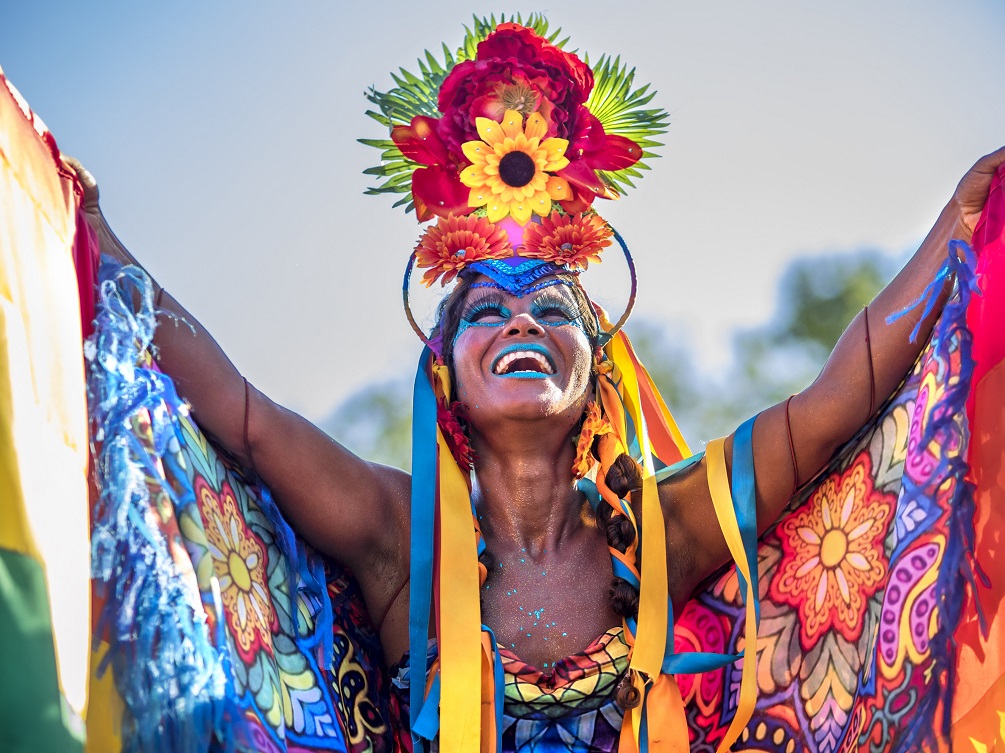


In major cities, Brazilian’s attire is smart and free, while clothing is more conservative inland.
Vibrant and colorful clothing is customary in Brazil and shorts or revealing clothes are not frowned upon. But if you are heading inland and towards the south, opt for modest clothing. That goes for visits to government buildings and religious sites as well.
A neat exterior is always appreciated, especially with hair and shoes.
The seasons in Brazil are the opposite of what they are in the Northern hemisphere.
For a summer trip, opt for light clothing with a breathable texture like linen. Also, pack a rain jacket for rainy weather.
It doesn’t get too cold during winter, but bring along jackets or sweaters just in case.
There are no limitations on what kind of beachwear to pack. Nudity or topless sunbathing is reserved for naturist beaches like Tambaba in Conde.
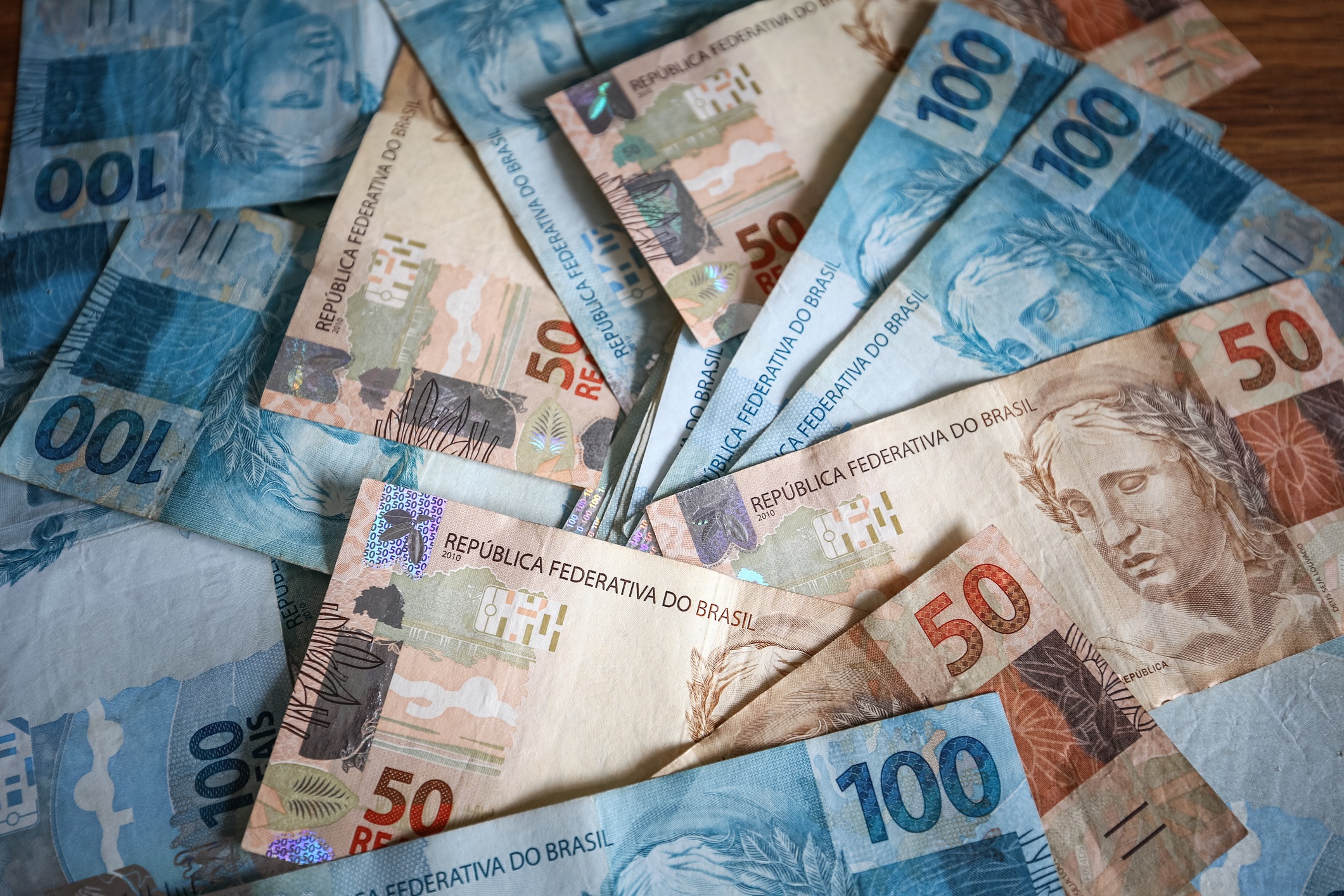


The Brazilian Real (BRL) is the official legal tender of Brazil. It’s subdivided into centavos.
Banknotes come in denominations of 2, 5, 10, 20, 50, 100, and 200 real and coins in 1, 5, 10, 25, 50 centavos, and 1 real.
Most establishments in the country accept credit and debit cards (Visa, MasterCard, Cirrus, and Maestro) for the payment of goods and services. But small businesses, markets, cafes, and areas outside of major cities may not.
You can find ATMs anywhere in Brazil, even in small towns. Those on the Cirrus and the PLUS network are the most common.
Use an ATM as early in the day as possible since most places lock them up for the night. Also, opt for those found indoors as opposed to outdoors when making withdrawals.
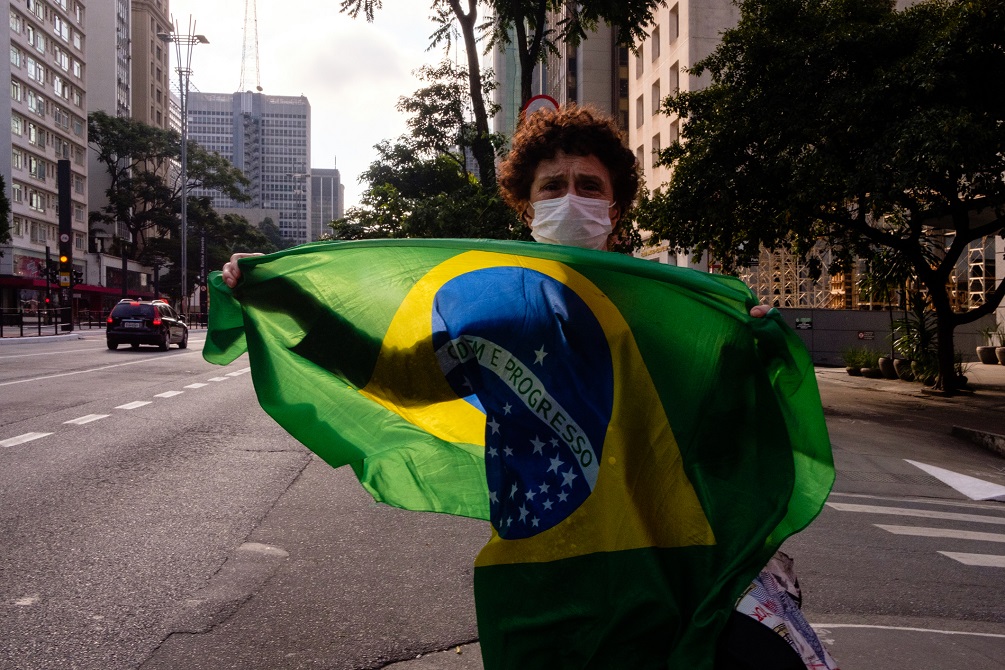


Portuguese is the official and widely spoken language of Brazil.
It’s a relative of the Portuguese spoken in Portugal but with different pronunciations and vocabulary. This is not much different from the contrasts of American and British English.
Many locals speak English. Other languages you may hear around Brazil include Spanish, German (in the areas of Santa Catarina and Rio Grande do Sul), and Italian.
The native population of the country speaks indigenous languages.
Before travelling to Brazil, it would be wise to learn a few words and phrases in Portuguese to navigate the cities. Here are some useful Portuguese sayings to get you started:
- Hey, what’s up? – Olá, tudo bem?
- Good morning – Bom dia!
- Good afternoon – Boa tarde!
- Good night – Boa noite!
- Please – Por favor
- Thank you – Obrigado
- You are welcome – De nada
- Excuse me – Com licença
- Can you help me? – Pode me ajudar?
- How much does this cost? – Quanto custa isso?
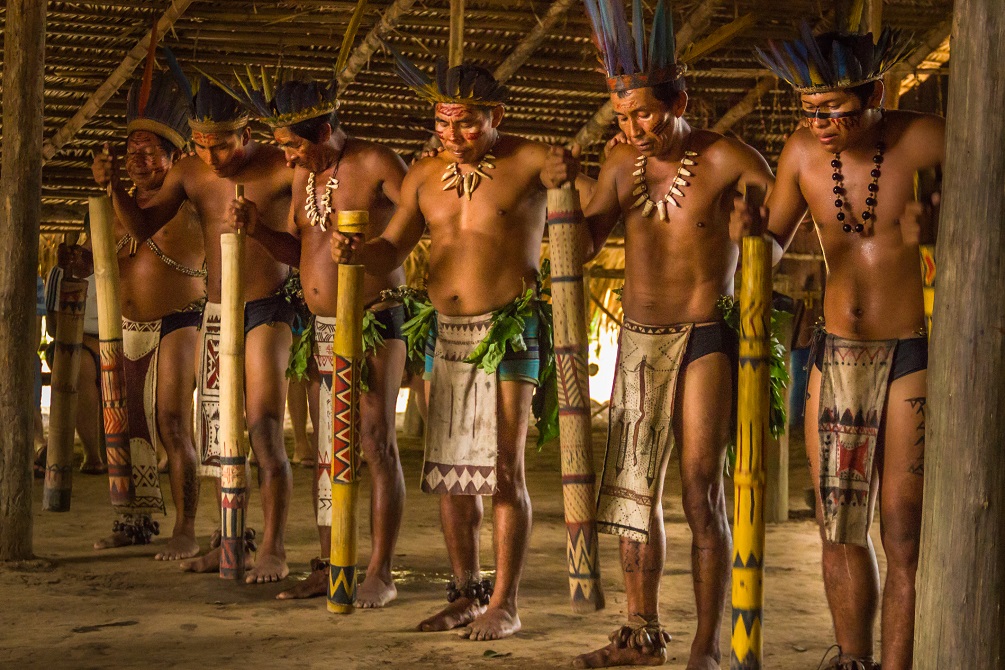


Brazil is one of the most multi-ethnic and culturally diverse countries in the world. This is because of the mass immigration of many people from Europe, Asia, and Africa.
Portuguese culture is at the core of Brazilian culture, which is clear in Brazil’s official language and predominant religion: Roman Catholicism.
Brazilian culture is interspersed with African cultural elements, mainly dance, food, music, and religious practices.
Over time, their culture started bearing influences from Italians and Germans. The indigenous Native American population influenced Brazil’s cuisine and languages as well.
One-half of the population is of European descent. A large portion is of mixed ancestry, namely European-African and European-Indian. A small percentage is of African and Afro-Indian descent, while Asians make up an even smaller share.
About 90 percent of Brazilians are Christian, with most followers belonging to the Roman Catholic Church and others the Protestant religion. Other faiths include Buddhism, Shintō and Islam.
Brazilian music styles include samba, the most typical form in the country, choro, and bossa nova.
The most popular sport is Football. Brazil holds the record of winning the FIFA World Cup tournament five times.
There are a few annual festivals hosted in Brazil.
The most renowned is the Carnival in Rio de Janeiro, a celebration with origins in Roman Catholic traditions, held every year before Lent.
The Saint John’s Festival in Campina Grande is another large festival celebrated in the country with music, dance, and fireworks.
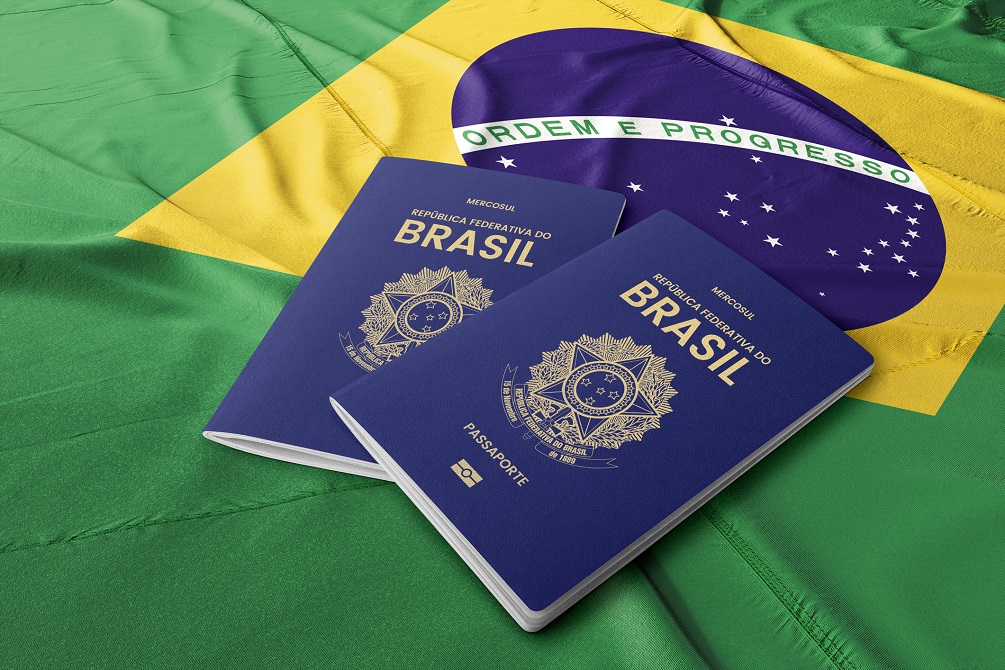


British nationals are exempt from obtaining a visa before entering Brazil.
Visitors can stay in the country for up to 90 days in a period of 12 months.
There is a possibility of extending your stay for an additional 90 days, which should equate to no more than 180 days in a 12-month period.
Extensions should be done well ahead of the expiry of the first 90 days by filing a request with the Federal Police in Brazil.
You must be able to provide a reason for your entry into Brazil and information pertaining to your itinerary. You may also have to prove that you have accommodation and sufficient finances for your stay, and a reservation for an outbound ticket.
Your passport doesn’t need to have a minimum validity of six months. But it should be valid for the duration of your stay in Brazil.
Ensure your passport is stamped before departing from immigrations.
Overstaying your visa will result in a notice to leave the country and a fine or deportation.



Brazil uses Type N (flat with three triangular prongs) plugs and sockets.
The standard voltage ranges anywhere from 110V to 220V, depending on the city or town.
Many hotels have sockets in both voltages. If only one is present, you can find a transformer in any local hardware store.
Alternatively, bring a travel voltage transformer along, including a universal adapter with surge protection and a converter for hairdryers and hot tools.
The standard frequency is 60 Hz.






Brazil covers about 47 percent of the South American landmass. After the United States, Canada, Russia, and China, it’s the fifth largest country in the world.
The Atlantic Ocean extends along Brazil’s eastern coast, which features stunning golden beaches like the renowned Copacabana. Venezuela, Guyana, Suriname, and French Guiana stand along the northern border.
Colombia is in the northwest and Peru in the west. Uruguay shares the southern boundary and Argentina, Paraguay, and Bolivia, the southwestern border.
Brazil has a complex and contrasting topography. The landscape bears features of both equatorial and semitropical environments. These include plains, grasslands, marshlands, and low peaks and exclude deserts and high mountains.
There are four distinct geographical zones.
The Guiana Highlands in the north comprises glorious waterfalls, forested plateaus, mountain ranges, and white-water rivers.
Horseshoe lakes, wetlands, and undulating hills dominate the Amazon lowlands in the west. This area is a part of the Amazon basin, which covers over 58 percent of Brazil. The Amazon River basin contains the world’s largest river system and most vast tropical rainforest.
The Pantanal geographic region in the south contains swamps and marshland. It’s one of the world’s largest freshwater wetlands spanning Brazil, Paraguay, and Bolivia.
The Brazilian highlands cover most of the southern regions. They feature rolling hills, flatlands, steep cliffs, and valleys. São Paulo is one city in the highlands.
Golden and white sand beaches extend along the Atlantic lowlands. This area comprises lagoons, level floodplains, swamps, and sand dunes as well.
Brazil has numerous notable river systems flowing in the north, south, east, and northeast.



Most of Brazil has a damp and semitropical climate except in the northeast where it’s semiarid.
The annual average temperature in the north is 28°C (82°F) and in the south is 20°C (68°F).
Warm currents compliment the entire Brazilian coast, making it the perfect spot to sunbathe and bask in views of the blue waters of the Atlantic Ocean.
Brazilian winters (June to September) are dry and cold, with temperatures reaching 0°C (32°F) in some areas, featuring frost and snow. In summer (December to March), temperatures can reach 40°C (104°F) in certain locations like Rio de Janeiro.
The lowlands are cooler, with an average temperature of 26°C (79 °F). In the highlands towards the south, it’s a few degrees cooler.
Because the weather can change drastically in some places, it’s wise to pack warm clothes, regardless of the season.
Annual rainfall received in most of Brazil ranges from 40 to 70 inches (1,000 to 1,800 mm).
Areas of the Amazon basin and the Serra do Mar chain of mountains in Southeastern Brazil get the most precipitation. In the Brazilian highlands, rainfall is most during the rainy season in summer.



A combination of cooking styles and flavorings used by different cultures defines Brazilian cuisine.
Dishes preserve historical culinary traditions and regional differences. They also reflect the native and immigrant inhabitants coexisting in the country.
A popular and signature dish in Brazil is Feijoada, a stew made of beans, beef, and pork. Locals typically eat Feijoada for lunch on Wednesdays and Sundays in Rio and São Paulo.
Regional meals include polenta and beiju from Italian cuisine and acarajé from African cuisine.
A dish of rice and beans is eaten alone or with a side of beef, French fries, a fried egg, and a salad.
Lunch and restaurant meals often comprise fried foods like banana, cassava, potato, meat, and cheese.
Brazilian cheese bread (or pão de queijo) made with cassava flour, kibbeh (from Arabic cuisine) and pamonha (a paste made from sweet corn and milk) are popular snacks.
Brazil has an assortment of desserts, including cocada (a traditional coconut sweet treat) and brigadeiros (chocolate fudge balls).



In major cities, Brazilian’s attire is smart and free, while clothing is more conservative inland.
Vibrant and colorful clothing is customary in Brazil and shorts or revealing clothes are not frowned upon. But if you are heading inland and towards the south, opt for modest clothing. That goes for visits to government buildings and religious sites as well.
A neat exterior is always appreciated, especially with hair and shoes.
The seasons in Brazil are the opposite of what they are in the Northern hemisphere.
For a summer trip, opt for light clothing with a breathable texture like linen. Also, pack a rain jacket for rainy weather.
It doesn’t get too cold during winter, but bring along jackets or sweaters just in case.
There are no limitations on what kind of beachwear to pack. Nudity or topless sunbathing is reserved for naturist beaches like Tambaba in Conde.



The Brazilian Real (BRL) is the official legal tender of Brazil. It’s subdivided into centavos.
Banknotes come in denominations of 2, 5, 10, 20, 50, 100, and 200 real and coins in 1, 5, 10, 25, 50 centavos, and 1 real.
Most establishments in the country accept credit and debit cards (Visa, MasterCard, Cirrus, and Maestro) for the payment of goods and services. But small businesses, markets, cafes, and areas outside of major cities may not.
You can find ATMs anywhere in Brazil, even in small towns. Those on the Cirrus and the PLUS network are the most common.
Use an ATM as early in the day as possible since most places lock them up for the night. Also, opt for those found indoors as opposed to outdoors when making withdrawals.



Portuguese is the official and widely spoken language of Brazil.
It’s a relative of the Portuguese spoken in Portugal but with different pronunciations and vocabulary. This is not much different from the contrasts of American and British English.
Many locals speak English. Other languages you may hear around Brazil include Spanish, German (in the areas of Santa Catarina and Rio Grande do Sul), and Italian.
The native population of the country speaks indigenous languages.
Before travelling to Brazil, it would be wise to learn a few words and phrases in Portuguese to navigate the cities. Here are some useful Portuguese sayings to get you started:
- Hey, what’s up? – Olá, tudo bem?
- Good morning – Bom dia!
- Good afternoon – Boa tarde!
- Good night – Boa noite!
- Please – Por favor
- Thank you – Obrigado
- You are welcome – De nada
- Excuse me – Com licença
- Can you help me? – Pode me ajudar?
- How much does this cost? – Quanto custa isso?



Brazil is one of the most multi-ethnic and culturally diverse countries in the world. This is because of the mass immigration of many people from Europe, Asia, and Africa.
Portuguese culture is at the core of Brazilian culture, which is clear in Brazil’s official language and predominant religion: Roman Catholicism.
Brazilian culture is interspersed with African cultural elements, mainly dance, food, music, and religious practices.
Over time, their culture started bearing influences from Italians and Germans. The indigenous Native American population influenced Brazil’s cuisine and languages as well.
One-half of the population is of European descent. A large portion is of mixed ancestry, namely European-African and European-Indian. A small percentage is of African and Afro-Indian descent, while Asians make up an even smaller share.
About 90 percent of Brazilians are Christian, with most followers belonging to the Roman Catholic Church and others the Protestant religion. Other faiths include Buddhism, Shintō and Islam.
Brazilian music styles include samba, the most typical form in the country, choro, and bossa nova.
The most popular sport is Football. Brazil holds the record of winning the FIFA World Cup tournament five times.
There are a few annual festivals hosted in Brazil.
The most renowned is the Carnival in Rio de Janeiro, a celebration with origins in Roman Catholic traditions, held every year before Lent.
The Saint John’s Festival in Campina Grande is another large festival celebrated in the country with music, dance, and fireworks.



British nationals are exempt from obtaining a visa before entering Brazil.
Visitors can stay in the country for up to 90 days in a period of 12 months.
There is a possibility of extending your stay for an additional 90 days, which should equate to no more than 180 days in a 12-month period.
Extensions should be done well ahead of the expiry of the first 90 days by filing a request with the Federal Police in Brazil.
You must be able to provide a reason for your entry into Brazil and information pertaining to your itinerary. You may also have to prove that you have accommodation and sufficient finances for your stay, and a reservation for an outbound ticket.
Your passport doesn’t need to have a minimum validity of six months. But it should be valid for the duration of your stay in Brazil.
Ensure your passport is stamped before departing from immigrations.
Overstaying your visa will result in a notice to leave the country and a fine or deportation.



Brazil uses Type N (flat with three triangular prongs) plugs and sockets.
The standard voltage ranges anywhere from 110V to 220V, depending on the city or town.
Many hotels have sockets in both voltages. If only one is present, you can find a transformer in any local hardware store.
Alternatively, bring a travel voltage transformer along, including a universal adapter with surge protection and a converter for hairdryers and hot tools.
The standard frequency is 60 Hz.
Travel related news, information and inspirational articles and videos for travellers booking flights or holidays to Brazil. Ask questions about travel in Brazil and get answers from Brazil experts
NEWS
Inspiration, Information and Travel Guides
MEET THE Brazil EXPERTS
If you are looking to book a holiday to Brazil or needs some help and advice planning travel to Brazil then contact one of the UK based independent travel agents that specialise in Brazil itineraries.
FEATURED VIDEOS
Your Travel Questions Answered
Ask any travel related question and get an answer from one of our experts that will provide you with an answer from their personal experience
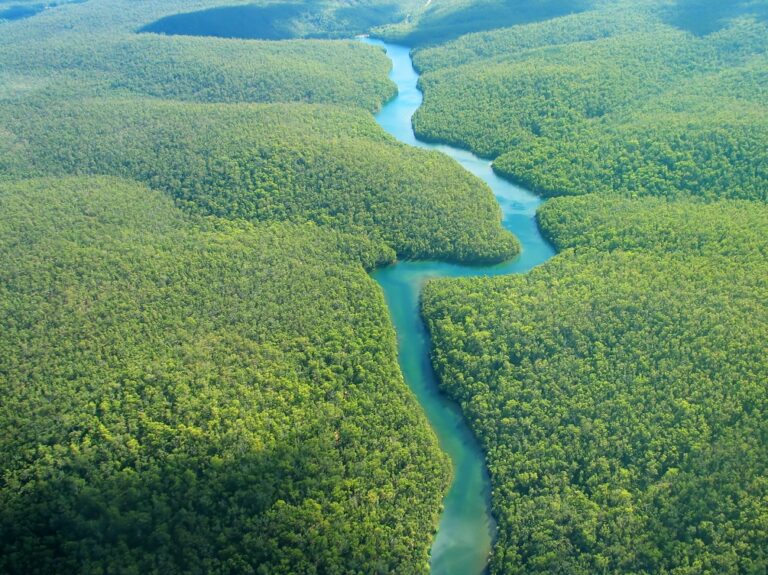

I'm wondering if camping in the Amazon forest and staying a night there is worth it. I'm also looking for ways to visit and spend the night in the Amazon forest. We are a group of ten people and are super eager to see at least what spending a night at the Amazon Forest looks like.
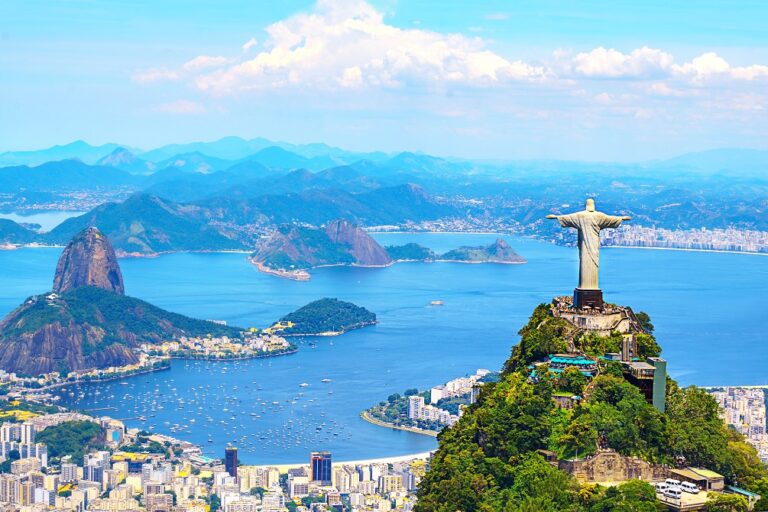

I visited Rio de Janeiro a few years ago and loved it. I’m looking to return to Brazil and want to see somewhere new, where should I go?

